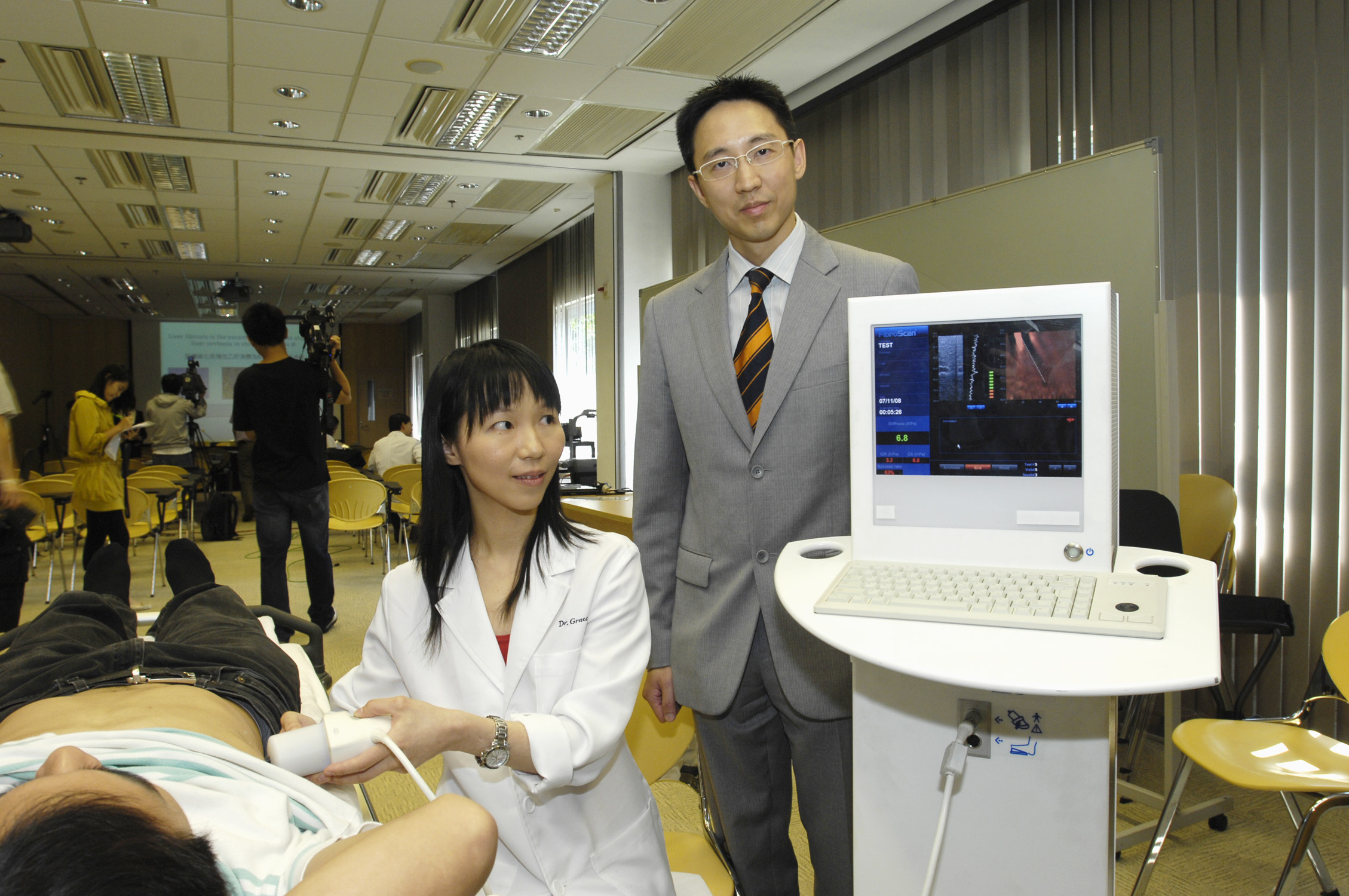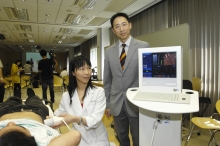CUHK
News Centre
A New Non-invasive TechnologyReduces More than Half of the Hepatitis B Patients for Liver Biopsy
The Chinese University of Hong Kong (CUHK) Center for Liver Health has developed an algorithm to interpret the reading of a new non-invasive method (Fibroscan) for measuring liver fibrosis and early cirrhosis. This new technology can reduce the number of chronic hepatitis B patients to perform liver biopsy, which is invasive with small risk of bleeding.
Chronic hepatitis B is the commonest cause of liver cirrhosis and hepatocellular carcinoma in Hong Kong. Liver fibrosis is the essential intermediate step from liver inflammation to liver cirrhosis. Assessment of liver fibrosis has become the most important clinical parameter to decide on the need of anti-viral treatment and to predict the risk of liver-related complications. Liver biopsy is the traditional gold standard to assess liver fibrosis, but it is limited by its invasive nature and a small risk of bleeding. CUHK has therefore introduced transient elastography (Fibroscan), a new non-invasive technology to measure liver stiffness. A higher liver stiffness measurement indicates more severe liver fibrosis. This technology has been widely validated in chronic hepatitis C patients in Europe but data in chronic hepatitis B is lacking.
In 133 patients suffering from various liver diseases (52% chronic hepatitis B), the Center for Liver Health has validated the accuracy of transient elastography against liver biopsy for different severity of liver fibrosis from 2006 to 2007. Transient elastography is found to be very accurate (90 %) to detect advanced liver fibrosis and early cirrhosis.
Another study was conducted among 156 chronic hepatitis B patients from 2006 to 2008, in which the accuracy of transient elastography to predict advanced liver fibrosis was further confirmed. However, a higher liver enzyme (alanine aminotransferase, ALT), which reflected more severe liver inflammation, falsely increased the liver stiffness for the same stage of liver fibrosis. Therefore, liver stiffness must be interpreted together with the ALT levels. Using a combined ALT and liver stiffness measurement algorithm, 60% of patients could have advanced fibrosis either confirmed or excluded. The remaining 40% of patients fell in a gray zone in which liver biopsy would be needed for accurate assessment of liver fibrosis.
These studies have validated the use of a new non-invasive measure of liver fibrosis, the Fibroscan, and demonstrated an algorithm to interpret its readings. A significant proportion of chronic hepatitis B patients do not need liver biopsy to detect advanced liver fibrosis with this new technology. Prof. Henry Lik-yuen Chan, Chairman of the Center for Liver Health therefore recommends the use of Fibroscan as the first line non-invasive assessment of liver fibrosis in chronic hepatitis B. Liver biopsy will only be needed when the result of Fibroscan is inconclusive or inadequate.
From left: Prof. Vincent Wai-sun Wong, Associate Professor, Department of Medicine and Therapeutics, CUHK Prof. Henry Lik-yuen Chan, Professor, Department of Medicine and Therapeutics, CUHK Dr Grace Lai-hung Wong, Honorary Clinical Tutor, Department of Medicine and Therapeutics, CUHK







